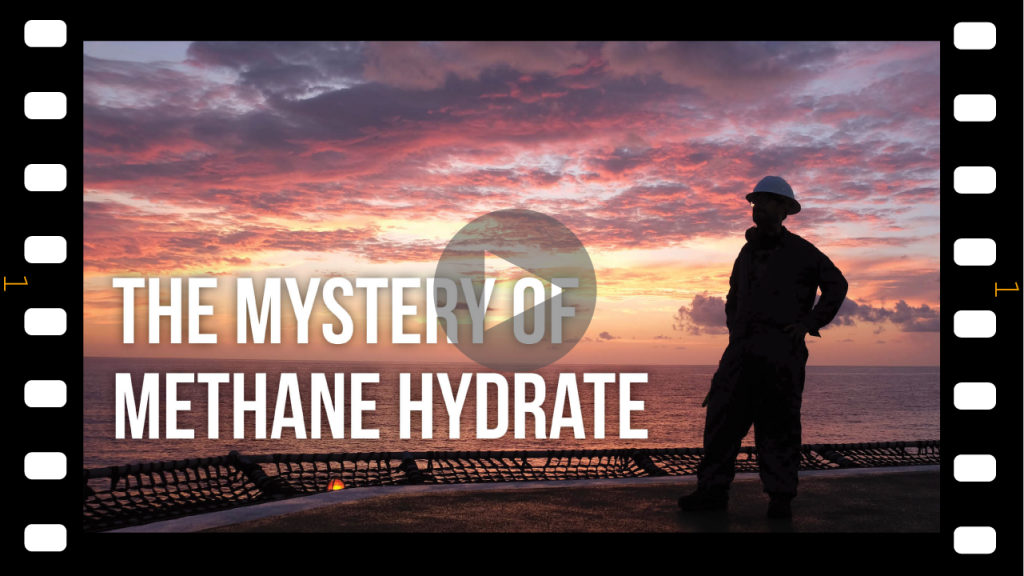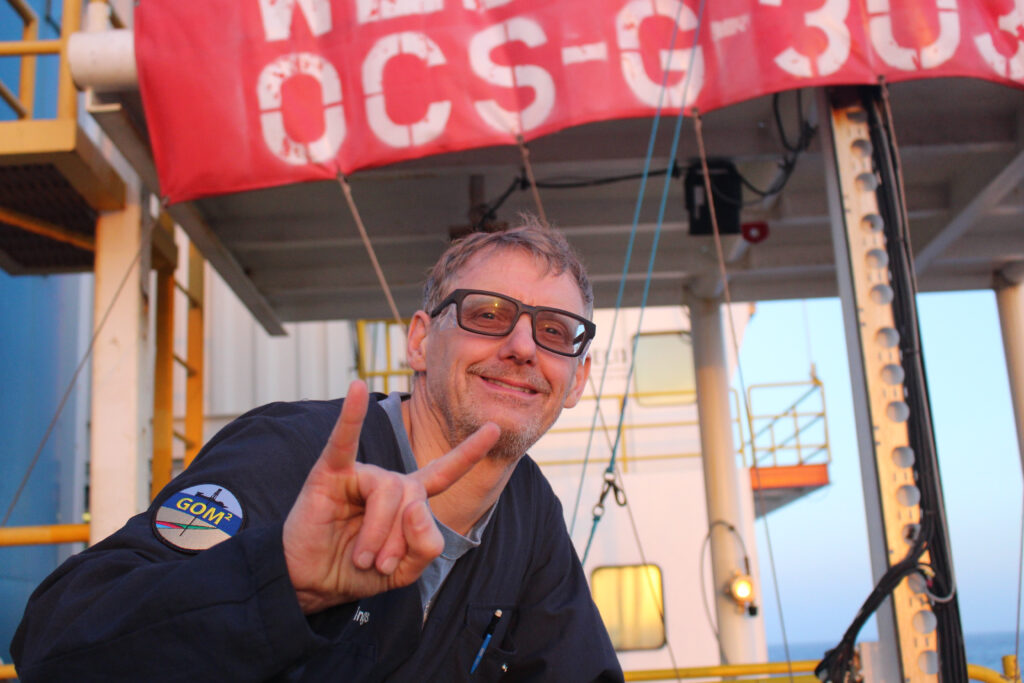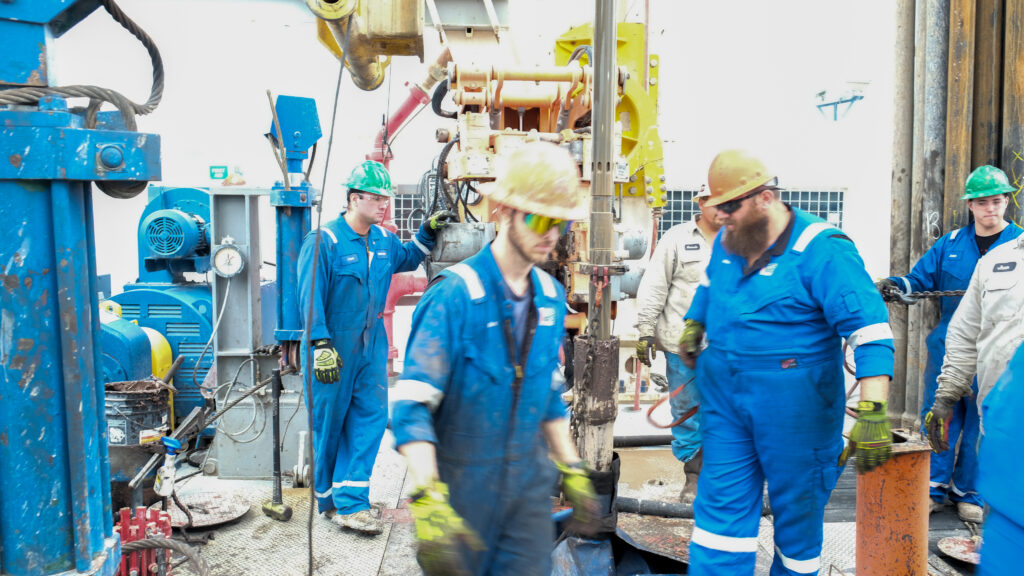
Editors Note: Scientists from the UT Jackson School of Geosciences and partner universities are on a mission funded by the Department of Energy to sample and study methane hydrate, a difficult to reach and poorly understood substance with potentially wide-ranging effects on the planet’s environment, climate and energy resources. Led by Jackson School Professor Peter Flemings, the scientific team includes researchers from the U.S. Geological Survey, Ohio State University, the University of Washington, Oregon State University, the University of New Hampshire, the Colorado School of Mines and Tufts University. Jackson School Science Writer Monica Kortsha and videographer Drew Ott joined the team to document the work and tell the story.
Today is my last day on the Helix Q4000, the offshore platform where The University of Texas at Austin-led science team is sampling and studying the methane hydrate reservoir system below.
I’ve been out here a week – and it’s gone by fast!
This blog isn’t the last of my writing about the methane hydrate research. I’ll be writing an in-depth piece about the mission for the Jackson School’s magazine, Newsletter. Drew Ott, the videographer who has been out on the Q4000 with me, will be making a short documentary about the mission.
Check this website in a couple months if you’re interested in these projects!
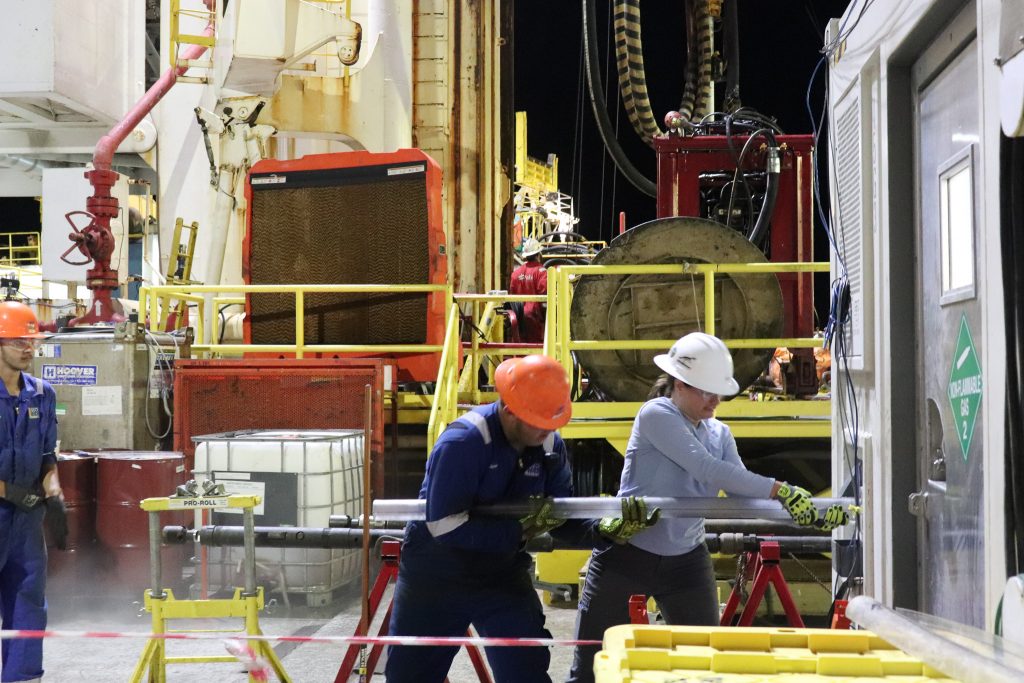
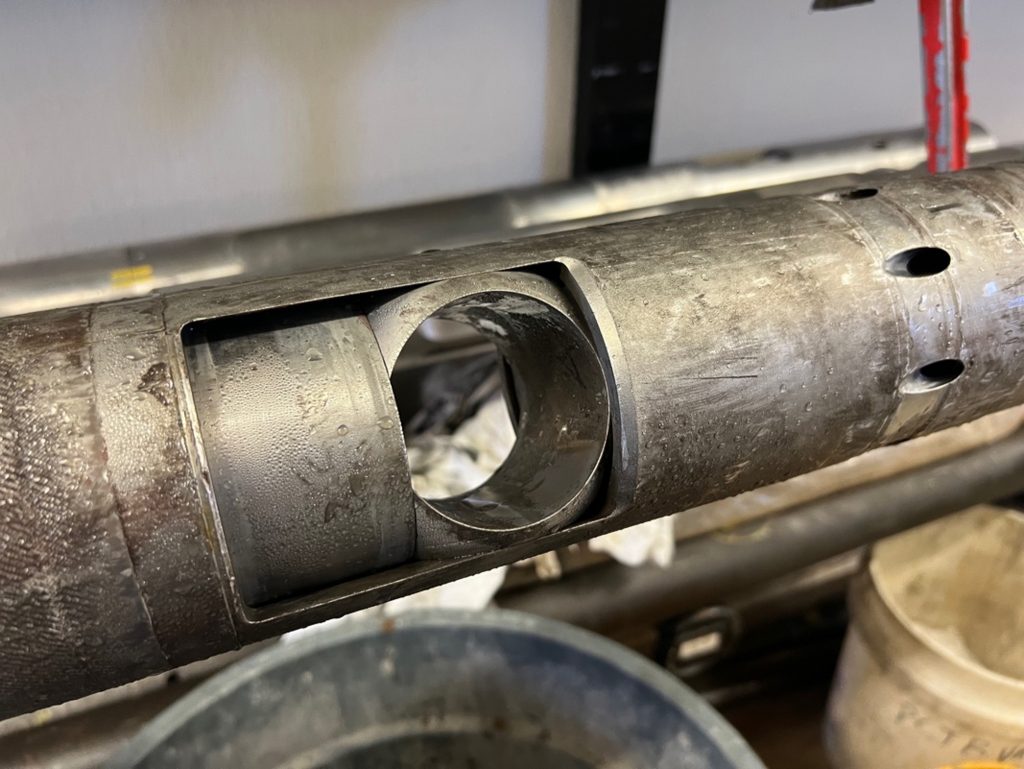
While Drew and I may be leaving, the scientists will be finishing the month out at sea.
Although coring is currently on hold (more on that in my previous post), it’s expected to resume by tomorrow afternoon.
Everyone I spoke to today is optimistic about the mission ahead – from the scientists, to the drilling engineers to the drill crew. The mechanical issue that stopped coring yesterday and today weren’t serious, just a time suck. The pressure coring tool that will be taking the majority of samples has already taken beautiful cores, and is only going to be more and more in its geological element. And, with two-ish days to catch up, the science team has cleared their lab benches for more core.
At this point in the mission, the science team has retrieved cores from the majority of the top section of the methane hydrate system reservoir – about 500 feet beneath the seafloor. Although this section isn’t rich in methane hydrates, it undergoes rapid changes as the influence of the ocean wanes, and deeper geology starts to take over.
In these cores, the researchers are hoping to study these changes and how they might affect the long-term stability of the frozen methane hydrate and the flow of free-gas that’s already in the system. Methane is a greenhouse gas. When it’s released into the ocean or into the atmosphere, it can affect ocean chemistry and the climate.

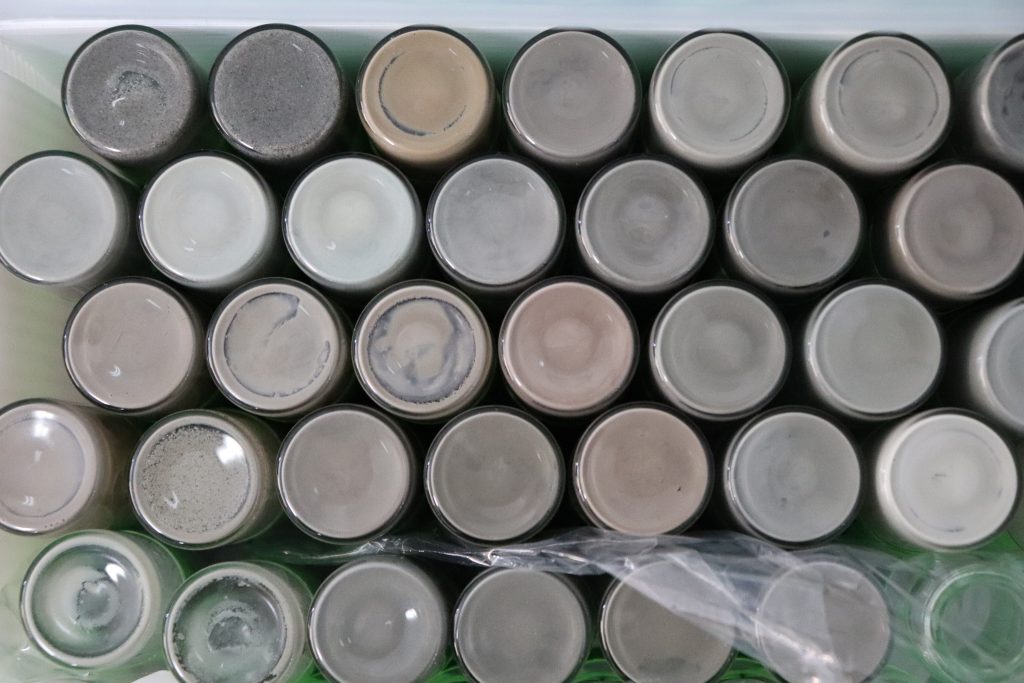
Next on the agenda is to take core samples from the deeper geologic layers that are known to hold the highest concentrations of methane hydrate in the reservoir system.
Most of the cores so far have been conventional, which allows any methane gas that isn’t swiftly captured during sampling to seep out. The methane hydrate-rich layers will be sampled with pressure cores, which trap the hydrate samples inside in the same state they’re found at depth. Kept under pressure, no gas escapes. The researchers can determine just how much methane is in each sample – which can help with estimating how much of the gas is in this reservoir, and in other methane hydrate deposits around the world.
Considering that methane hydrates make up one of the largest caches of carbon on the planet, having a better handle on this volume is important.
The members of the science team are approaching the study of methane hydrate from their own perspectives and with their own questions. But they’re all geoscientists united in understanding the larger reservoir system where the methane hydrates are found. Some are looking at microbes. Some are looking at sediments. Some are looking at chemicals in the gas and in the water. Some are looking at the quantity of gas.
The arrangement resembles the reservoir system itself – multiple parts working together to create a unique environment in which high concentrations of methane hydrate can form. It makes sense that you need a science team that’s just as multi-faceted to start to understand it.
It’s been an honor – and a lot of fun – to be able to spend this past week with them. I’m wishing them good luck, and plenty of cores in their future!
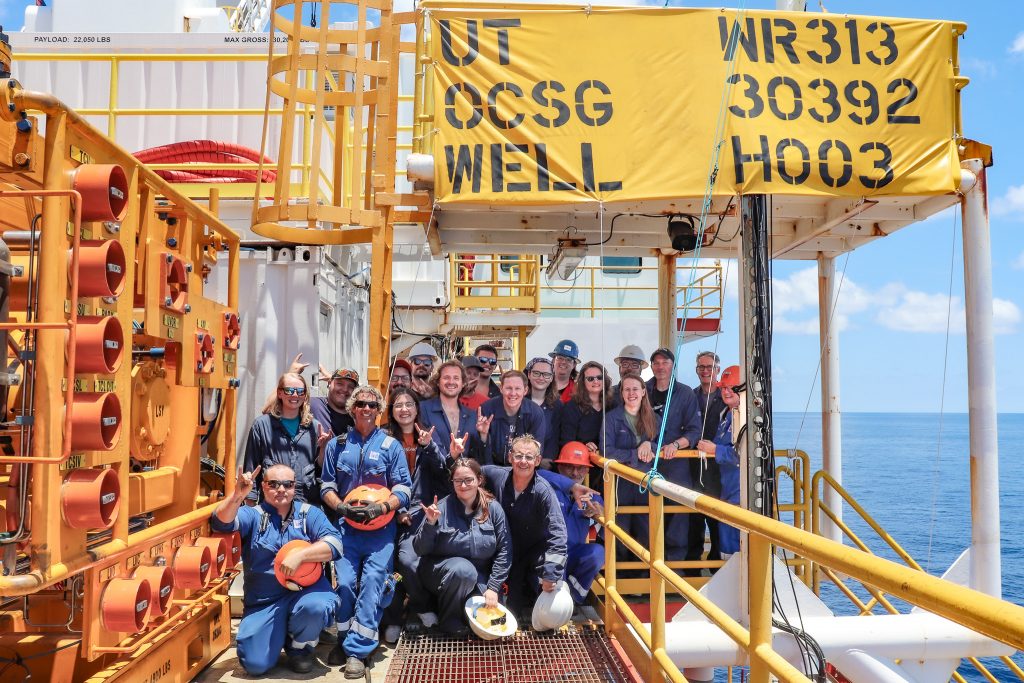
The Mystery of Methane Hydrate – a documentary
Monica Kortsha’s Expedition Blog
Methane Hydrate: The Mission Continues
Pressure Coring Technology One Step Closer to Hydrates Test

